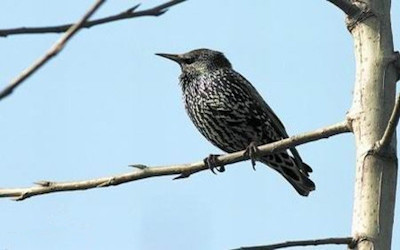PTE考生目前最大的问题之一就是练习题缺乏。除了有限的基本官方书(PLUS,Testbuilder, OG)之外就没有题了。很多英语基础不是很扎实的同学很难找到练习材料。悉尼文波雅思PTE培训学校专门为澳洲,尤其是悉尼、墨尔本的PTE考生准备了适合PTE听力阅读练习的科学60秒。各位PTE同学可以练习PTE听力中的summarise spoken text和PTE口语中的retell lecture,PTE听力口语-科学60秒-Frosty Moss练习记笔记技巧和复述。废话少说,下面开始:
This is Scientific American — 60-Second Science. I’m Emily Schwing.
Washington state is the country’s largest producer of cherries and blueberries. The state’s wine industry is second only to California’s in value. But one non-native, nuisance bird is wreaking havoc.
[Sound of starling call.]
The European starling was brought to North America more than a century ago, by unwitting naturalists who wanted to introduce all the birds mentioned in Shakespeare’s plays. Today, the starlings do hundreds of millions of dollars’ worth of damage to Washington’s crops. But one man has taken it upon himself to get rid of the birds—without killing them.
“We’re not terminators. Our job description would be more like security guards.”
Vahé Alaverdian, raptor wrangler. It’s barely 6 A.M., but he’s been out in a field of cherry trees in Yakima Valley since much earlier. He’s working with a Peregrine falcon.
And as long as the falcon flies over these fields, fruit-loving birds like robins, finches and starlings will not. Fourth-generation fruit grower Mark Roy estimates Alaverdian’s raptors save him a thousand dollars a day in otherwise lost produce.
“So, I mean it pays to come and to scare the birds away.”
Birds of prey work where other traditional methods of bird abatement—like scarecrows, pyrotechnics and netting—fail. Alaverdian says even the most modern technology is no match for problem birds like starlings.
“People said ‘oh, we’re going to put you out of business. We’ve got drones, we’re going to program these drones and then we’ll fly them over blueberries.’ And then what?”
Eventually, he says, starlings get used to the drones.
“It’s just not something they’re genetically programmed to avoid. It’s good for 48 hours and then you need another tool.”
Modern tools can decrease fruit damage to thirty percent, but Alaverdian says one client at a Vineyard in California has seen falconry bring that down to between five and seven percent.
It’s a tried and true taloned tool, that protects even the lowest hanging fruit.
Thanks for listening for Scientific American — 60-Second Science Science. I’m Emily Schwing





